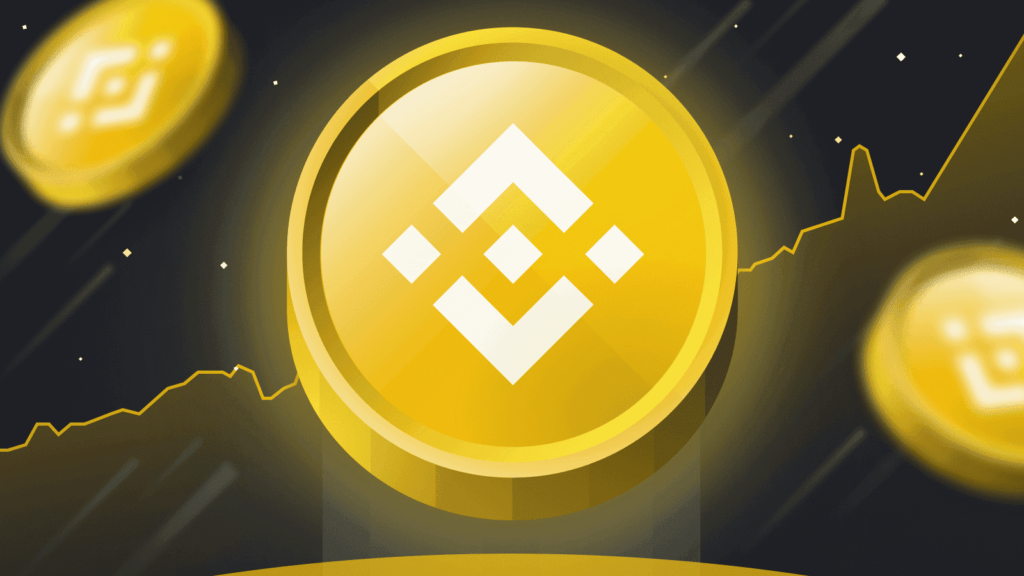When it comes to choosing a cryptocurrency platform, investors are often faced with a multitude of options. Among the most popular and widely-used exchanges are CoinUp and Binance. Both platforms offer extensive features, large cryptocurrency selections, and various services tailored to different types of traders and investors. However, they also have distinct differences in terms of usability, security, fees, and overall user experience. This comprehensive comparison aims to delve into the core aspects of coinup vs binance, helping you determine which platform aligns best with your needs.
In this article, we will examine each platform’s overview, key features, user experience, fee structures, security measures, supported cryptocurrencies, regulatory compliance, customer support, and mobile app experiences. By analyzing these factors thoroughly, you’ll gain valuable insights into which exchange might serve as your preferred gateway into the world of digital assets.
Coinup vs Binance: Overview of Platforms

Before diving into detailed comparisons, it’s essential to understand what each platform offers at a glance. Both CoinUp and Binance have carved out significant niches within the cryptocurrency space, but they do so with different visions, target audiences, and operational models.
CoinUp is typically positioned as a user-friendly, accessible platform focusing on providing straightforward trading experiences, often targeting newcomers to crypto. Its interface emphasizes simplicity, making onboarding and daily transactions seamless even for beginners. CoinUp often promotes features like easy fiat-to-crypto conversions, educational resources, and basic trading tools. While it may not boast the vast array of advanced options that professional traders desire, its design caters well to casual investors or those just starting their crypto journey.
Binance, on the other hand, is renowned as one of the largest and most comprehensive exchanges globally. It boasts an extensive range of cryptocurrencies, advanced trading tools, futures and margin trading options, staking, savings, and more. Binance’s platform is geared toward experienced traders seeking sophisticated functionalities, although it has also expanded initiatives to cater to new users through simplified interfaces and educational content. Its global reach and diverse service offerings make Binance a one-stop shop for many crypto enthusiasts.
Both platforms have established robust reputations, but their core philosophies differ—CoinUp aims for simplicity and accessibility, while Binance leans toward depth and extensive feature sets. The choice between them depends heavily on your trading style, experience level, and what you prioritize in a crypto exchange.
Key Features: CoinUp vs Binance
The features offered by a crypto platform greatly influence the overall trading experience. Here, we’ll analyze the primary functionalities, tools, and extras provided by both CoinUp and Binance, highlighting their strengths and limitations.
User Interface and Navigation
A crucial aspect of any platform is how intuitive and navigable it is. CoinUp prides itself on offering a minimalist, clean interface designed for ease of use. The layout minimizes clutter, prioritizing essential functions such as buying, selling, and account management. For beginners, this streamlined approach reduces confusion and makes the onboarding process smoother.
Conversely, Binance’s interface can be more complex due to its extensive features. It provides multiple trading views—classic, advanced, and simplified—to accommodate users with varying experience levels. While this flexibility is advantageous for seasoned traders, it can be overwhelming for newcomers. However, Binance has made efforts to improve user onboarding with beginner-friendly modes and tutorials.
Trading Tools and Order Types
Advanced trading features often distinguish a platform suitable for professional traders. CoinUp offers fundamental order types—market, limit, and stop orders—with some basic charting tools. Its focus remains on straightforward transactions rather than complex strategies. This simplicity benefits casual investors who want quick trades without delving into technical analysis.
Binance excels in offering a wide variety of order types, including futures contracts, margin trading, OCO (One-Cancels-the-Other), and algorithmic trading options. Its platform includes comprehensive charting tools powered by TradingView, technical indicators, and real-time market data. Traders who utilize technical analysis or engage in derivatives trading will find Binance’s features invaluable.
Additional Services
Beyond spot trading, Binance provides an ecosystem of financial products—staking, savings accounts, liquidity pools, Launchpad token launches, and more. These services help users generate passive income and participate in blockchain projects directly through the platform.
CoinUp, meanwhile, primarily concentrates on core trading functions. Some versions offer educational programs, crypto wallets, and basic staking, but the ecosystem is less elaborate compared to Binance. Its value proposition revolves around simplicity, not diversification.
User Experience: Coinup vs Binance
The user experience encompasses everything from platform responsiveness to ease of transactions, customer onboarding, and overall satisfaction. A positive experience encourages continued engagement, whereas a frustrating interface can drive users away.
Platform Reliability and Performance
CoinUp generally delivers stable performance suited for occasional traders. Its servers are optimized for minimal downtime, though it may lack the robustness needed during peak market volatility. The platform’s simplicity ensures quicker loading times and fewer technical hiccups, especially for users with basic devices.
Binance’s infrastructure is built to handle massive trading volumes, providing high liquidity and uptime even during turbulent markets. However, some users report occasional lag or glitches when executing complex trades or using advanced features. Overall, Binance’s performance is impressive given its scale, but the complexity sometimes introduces a steeper learning curve.
Ease of Sign-up and Onboarding
CoinUp simplifies registration processes, often requiring minimal steps and straightforward verification procedures. Its onboarding flow tends to be faster, making it attractive for new users eager to start trading quickly.
Binance’s sign-up process involves identity verification steps compliant with KYC regulations, which can be time-consuming but necessary for security and regulatory compliance. Its multi-layered verification process might deter those seeking instant access but enhances trustworthiness.
Educational Resources and User Support
Both platforms offer resources to assist users. CoinUp’s approach is oriented towards education, providing tutorials, FAQs, and guides designed for newcomers.
Binance invests heavily in educational content, webinars, and community engagement, reflecting its target audience of diverse trader profiles. Its extensive help center and responsive customer support channels aim to resolve issues swiftly, although wait times can vary.
Trading Fees Comparison: Coinup vs Binance
Fees significantly impact profitability, especially for frequent traders. Understanding the fee structure helps users optimize costs and strategize around transaction costs effectively.
Standard Trading Fees
CoinUp usually offers competitive fees, often adopting fixed-rate or tiered structures that favor small-volume traders. Its fee policies are transparent, with discounts available for higher trading volumes or holders of proprietary tokens.
Binance’s fee schedule is among the most competitive in the industry. It employs a tiered fee structure based on 30-day trading volume and BNB (Binance Coin) holdings. Users holding BNB benefit from discounted trading fees, making frequent traders incentivize to use Binance’s native token.
Deposit and Withdrawal Fees
Deposit fees on CoinUp tend to be minimal or nonexistent for certain cryptocurrencies, with withdrawal fees varying depending on the asset. These fees are generally transparent and publicly posted.
Binance charges withdrawal fees that fluctuate based on network congestion. While deposit fees are typically absent, withdrawal costs can be higher for specific tokens, especially during periods of high activity. It’s advisable for users to monitor these fees regularly.
Special Fee Promotions
Binance frequently runs promotional campaigns offering zero trading fees or rebates during special events, attracting high-volume traders. CoinUp may occasionally run promotions but generally maintains consistent fee structures to foster trust and predictability.
Security Measures: Coinup vs Binance
Security is paramount in the cryptocurrency realm, where hacking incidents and scams have historically plagued exchanges. Both CoinUp and Binance implement various measures to protect user assets, but their approaches and efficacy differ.
Security Protocols and Technologies
CoinUp employs standard security practices such as two-factor authentication (2FA), SSL encryption, cold storage of the majority of funds, and regular security audits. Its relatively smaller user base allows it to focus on targeted security measures suitable for its scope.
Binance utilizes advanced security protocols, including multi-tier and multi-cluster system architecture, cold storage for most assets, biometric logins, and adaptive anti-phishing codes. It also has a dedicated Security Team that continuously monitors for suspicious activities. Binance’s extensive security infrastructure reflects its scale and the necessity to safeguard billions of dollars in assets.
Past Security Incidents and Response
While no platform is entirely immune to breaches, Binance experienced a major hack in 2019 where hackers stole over 500 million USD worth of assets. The platform responded swiftly with a security fund (SAFU) to reimburse affected users and enhanced its systems afterward.
CoinUp has not been involved in any significant security breach to date, partly owing to its smaller scale and focused user base. That said, its security practices are generally aligned with industry standards, emphasizing user education about phishing and scams.
User Control and Asset Management
Both platforms provide users with control over their private keys and enable withdrawal controls. Binance recommends enabling multiple security layers and offers optional hardware security keys.
Overall, security measures are critical considerations, and Binance’s extensive practices reflect its position as a leading exchange committed to protecting assets at scale.
Supported Cryptocurrencies: Coinup vs Binance
The variety and diversity of available cryptocurrencies can influence a trader’s ability to diversify and explore new projects. Here, we compare the breadth of supported coins and tokens on both platforms.
Range of Cryptocurrencies Offered
CoinUp mainly supports major cryptocurrencies like Bitcoin (BTC), Ethereum (ETH), Ripple (XRP), Litecoin (LTC), and a handful of altcoins. Its selection tends to focus on high-market-cap assets, offering sufficient options for most casual traders.
Binance boasts thousands of cryptocurrencies, covering major, mid-cap, and numerous emerging tokens. Its extensive listing includes DeFi tokens, NFTs, and newly launched projects via Binance Launchpad. For traders interested in exploring lesser-known assets or participating in initial offerings, Binance provides unmatched opportunities.
Listing Criteria and Process
Listing new tokens on CoinUp involves a rigorous review process focusing on project credibility, security, and community support. This ensures safety but can result in fewer listings.
Binance has a dedicated listing team that evaluates tokens based on market potential, compliance, and technological innovation. Its openness to listing new tokens rapidly enables traders to access evolving markets much sooner.
Accessibility for Different Trader Types
Casual investors favor platforms like CoinUp for their straightforward selections and ease of use. Meanwhile, professional traders and speculators benefit from Binance’s vast library, allowing them to capitalize on niche projects and arbitrage opportunities.
Regulatory Compliance: Coinup vs Binance
Navigating legal landscapes is vital for long-term platform sustainability. Regulatory compliance also influences transparency, security, and user trust.
Legal Status and Operating Regions
CoinUp generally operates in regulated environments, adhering to local laws and KYC/AML standards. Its geographic reach may be limited in some jurisdictions due to compliance requirements.
Binance’s regulatory status varies significantly worldwide. While it maintains compliance in regions like Singapore, the UK, and Japan, it has faced bans and restrictions in others such as the USA and China. Binance actively works to align with regional laws but must adapt its offerings accordingly.
KYC and AML Procedures
Both platforms enforce stringent KYC procedures to verify user identities. CoinUp emphasizes swift verification, often with minimal documents, aiming for a balance between security and ease of access.
Binance has comprehensive KYC processes, especially for fiat transactions, with strict anti-money laundering procedures. It requires detailed documentation, which can be time-consuming but adds to platform integrity.
Impact on User Privacy and Access
Users concerned with privacy may find CoinUp more accommodating due to potentially lighter verification requirements. Conversely, Binance’s thorough KYC process ensures a safer trading environment, albeit at the expense of some privacy.
Customer Support: Coinup vs Binance
Effective customer support fosters trust and resolves issues promptly, which is critical given the complexities of crypto trading.
Support Channels and Responsiveness
CoinUp offers support through email, live chat, and FAQ resources. Due to its smaller scale, responses tend to be quicker, and personalized assistance is more accessible.
Binance provides multi-channel support, including email, live chat, and social media. Its large user base means support queues can be longer, especially during high traffic periods, but the platform continually expands its support infrastructure.
Quality of Assistance
Customer feedback indicates that CoinUp’s support staff are generally knowledgeable and helpful, particularly in resolving onboarding or transaction queries.
Binance’s support team handles a vast volume of requests, which can lead to variability in response quality. However, Binance invests heavily in training and AI-powered solutions to enhance efficiency.
Resolution Time and User Satisfaction
For typical inquiries, CoinUp often resolves issues within hours. Binance’s resolution times can extend to days if complex or requiring escalation, but overall user satisfaction remains high due to the platform’s comprehensive support resources.
Mobile App Experience: Coinup vs Binance
Mobile trading is essential for modern investors seeking flexibility and real-time market engagement. Evaluating app performance and usability provides insight into platform convenience.
App Design and Usability
CoinUp’s mobile app features an intuitive, minimalistic design, mirroring its web counterpart. It emphasizes straightforward navigation, quick order execution, and easy account management.
Binance’s app is feature-rich, offering advanced charting, multiple trading modes, and account functionalities. While slightly more complex, it is optimized for ease of use, with a clean interface suitable for both novice and experienced traders.
App Functionality and Features
CoinUp’s app focuses on core trading functions—buying, selling, wallet management, and basic alerts. Its simplicity allows for fast transactions and minimal distractions.
Binance’s app includes advanced features such as futures trading, staking, savings, and a marketplace for NFTs and collectibles. Push notifications alert traders about market movements or platform updates, enhancing engagement.
Stability and Performance
Both apps are regularly updated to fix bugs and improve stability. CoinUp’s app tends to load quickly and perform reliably under typical conditions.
Binance’s app can sometimes experience lag during volatile periods or heavy trading activity, but overall, it maintains high performance levels.
Conclusion: Which is Better, Coinup or Binance?
Choosing between coinup vs binance ultimately hinges on your individual needs, experience level, and goals. CoinUp offers an accessible, simple, and efficient platform perfect for beginners or casual traders who prioritize ease of use and straightforward transactions. Its focus on core features and security makes it an excellent entry point into the crypto space.
Binance, however, stands out with its extensive cryptocurrency support, advanced trading tools, and diverse ecosystem—catering to professional traders, institutions, and those looking for innovative investment opportunities. Its robust security measures, competitive fees, and global presence make it a versatile platform capable of supporting a wide range of trading strategies.
In summary, if you are a newcomer seeking a hassle-free experience, CoinUp may be the right choice. If you are an experienced trader or an investor interested in a broad array of assets and sophisticated features, Binance is likely the superior option. Both platforms continue to evolve, so consider your current needs and future ambitions when making your decision.
Final Thoughts
Selecting the ideal cryptocurrency platform requires understanding your trading preferences, investment goals, and comfort with technology. While coinup vs binance highlight contrasting approaches—simplicity versus sophistication—both are reputable options that serve different segments of the crypto community. Careful evaluation of key factors such as usability, fees, security, and support ensures you choose an exchange that not only meets your immediate requirements but also adapts to your growing crypto journey.


